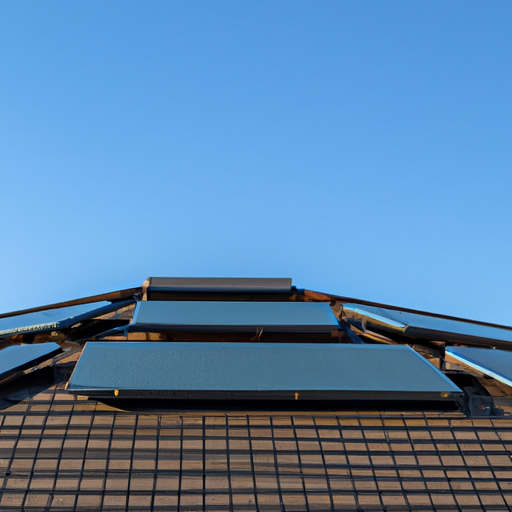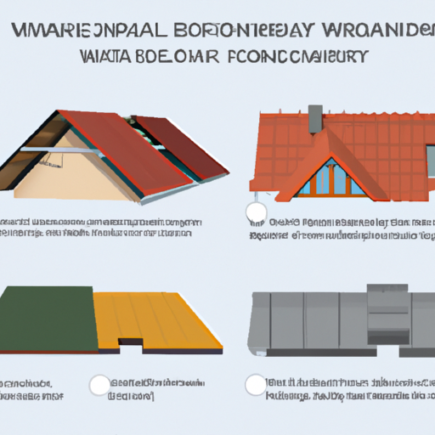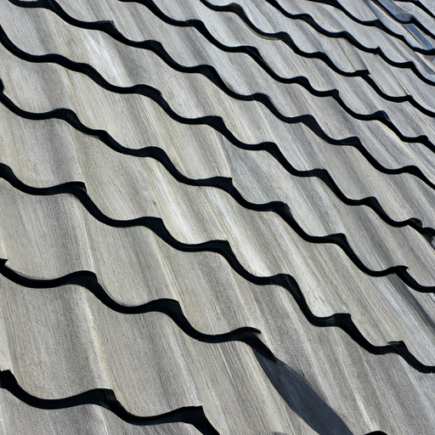The article „Types of Roof Construction: A Comprehensive Guide” provides an in-depth exploration of various types of roofs, including gable, hip, flat, mansard, gambrel, and shed roofs. The article discusses the key characteristics and benefits of each type, such as ventilation, rainwater drainage, increased stability, extra living space, and cost-effectiveness. It emphasizes the importance of selecting the right type of roof construction based on factors like climate, architectural style, and budget. The second article, „Roofing Materials: Exploring the Options for Your Construction Project,” focuses on the significance of choosing the appropriate materials for roof construction. It highlights the impact of materials on performance, aesthetics, and cost. The article presents asphalt shingles, metal roofing, clay tiles, slate, and wood shingles as popular roofing material options, discussing their characteristics and advantages. Overall, both articles provide comprehensive information to help readers make informed decisions about roof construction and material selection for their projects.
The Importance of Proper Roof Construction: Ensuring Durability and Efficiency
Proper roof construction is crucial for a durable and efficient structure. This comprehensive guide covers the fundamentals of choosing the right materials, preparing the roof deck, installing the underlayment, applying the roofing material, and finishing with proper touches and inspections. Following these steps will ensure longevity, energy efficiency, and cost savings. Efficient roofing plays a vital role in reducing emissions, conserving resources, and saving money for homeowners. By investing in proper roof construction, building owners can enhance the overall quality and performance of their buildings.
A Comprehensive Guide to Roof Construction: Types, Materials, and Techniques
In this first installment of our comprehensive guide to roof construction, we provide an introduction to the basics and the importance of a well-constructed roof. Roofs are essential components of any building, protecting the occupants from the elements and ensuring structural integrity. The principles of roof construction involve creating a waterproof barrier and choosing the right design and materials based on climate and budget considerations. There are various types of roofs and materials commonly used, each with its own unique characteristics and benefits. Understanding the importance of a well-constructed roof is crucial for homeowners, builders, and architects, as it prevents water damage, contributes to energy efficiency, and adds value to a property. Stay tuned for future articles where we delve deeper into each aspect of roof construction, providing detailed information and equipping you with the knowledge necessary to make informed decisions.
Exploring Different Types of Roof Construction Techniques
In this comprehensive guide, the various types of roof construction techniques are explored, highlighting their key features and applications. Pitched roof construction is popular for residential buildings due to its steep slope, excellent water drainage, and durability. Flat roof construction is commonly seen in commercial and industrial buildings, offering cost-effectiveness and additional usable space. Green roof construction involves the installation of vegetation layers, providing insulation and environmental benefits. Domed roof construction creates a striking architectural statement with its rounded shape and superior resistance to extreme weather conditions. Other techniques such as gable roofs, hip roofs, and mansard roofs are also discussed. The importance of considering factors like climate, building design, and local regulations is emphasized. By understanding the various techniques, readers can make informed decisions that contribute to the functionality, durability, and aesthetics of their structures.
Essential Factors to Consider in Roof Construction
The article highlights the importance of proper roof design and construction. It emphasizes that a well-designed roof ensures the durability of the building and protects it from various weather conditions. Additionally, it discusses how proper roof design leads to energy efficiency and reduces energy consumption. The article also mentions that considering specific needs and characteristics of the building during roof design is crucial. Lastly, it highlights that proper roof design ensures the safety of occupants by reducing the risk of structural failures and complying with fire safety regulations. In conclusion, investing in professional roof design and construction enhances the overall quality and functionality of the building.
Advanced Techniques in Roof Construction: Exploring Innovative Materials and Designs
In the article „Introduction to Advanced Techniques in Roof Construction: A Comprehensive Guide,” the author explores the advancements in roof construction techniques driven by sustainability, energy efficiency, and resilience. The guide covers the selection of materials, with a shift towards more sustainable alternatives like metal roofing, green roofs, and solar panels. It also highlights the importance of innovative designs, including proper insulation, ventilation, and drainage systems, as well as cool roof coatings and reflective surfaces. Additionally, the article discusses the integration of sustainable practices and aesthetic appeal, such as green roofs and integrated solar roofing systems. The conclusion emphasizes the significance of embracing advanced techniques to create roofs that not only protect but also contribute to a greener and more resilient future.
In the article „Exploring Innovative Materials for Sustainable Roof Design: A Look into the Future,” the author focuses on the exploration of innovative materials for sustainable roof design. Architects and engineers are actively seeking materials and designs that are aesthetically pleasing and environmentally friendly. The emerging trend of green roofs, which incorporate vegetation on the roof surface, is discussed, highlighting their benefits in reducing the urban heat island effect, improving air quality, and increasing biodiversity in urban areas. The article emphasizes the importance of sustainability and environmental consciousness in the selection of materials for roof construction.
The Basics of Roof Construction: Understanding the Key Components and Processes
Roof construction is a vital aspect of building design that protects homes and commercial properties from the elements. This comprehensive guide provides an introduction to the key components and processes involved in roof construction. It covers the importance of roof coverings and the different materials available, the role of the roof deck in providing structural support, the significance of insulation and ventilation in maintaining a comfortable indoor environment, the use of flashing to prevent water penetration, and the importance of well-designed structural elements such as trusses or rafters. Understanding these components is crucial for homeowners and construction professionals in ensuring the longevity and performance of roofs.
The Art of Roof Construction: Insights into Design, Structural Integrity, and Energy Efficiency
Design is a crucial aspect of roof construction, as it determines the functionality and beauty of the end result. The choice of materials, such as asphalt shingles, metal roofing, or clay tiles, must align with the specific requirements of the structure. The pitch or slope of the roof affects both its appearance and functionality, with different pitches being suitable for different climates. The overall form and shape of the roof should complement the building’s architectural style. Proper ventilation and insulation are also essential for maintaining temperature and moisture levels. Finally, professional expertise and collaboration play a vital role in achieving a well-designed roof. In conclusion, a well-designed roof not only enhances the overall aesthetics of a building but also ensures structural integrity and energy efficiency.
A Comprehensive Guide to Roof Construction: Types, Materials, and Techniques
The article provides an overview of roof construction, focusing on the understanding of different types and styles. It discusses pitched roofs, which are popular for their excellent water drainage and durability. Flat roofs are commonly used in commercial buildings and require proper waterproofing. Gable roofs offer ventilation and attic space but can be prone to wind damage and leaking. Hip roofs provide stability, drainage, and a classic architectural look. Mansard roofs combine different styles and provide additional living space. Understanding these different types and styles is crucial for planning a new building or renovating an existing one, as it affects factors such as water drainage, wind resistance, and architectural appeal.
Essential Tips for Successful Roof Construction: From Design to Installation
In the article „Planning the Perfect Roof: Key Considerations for Successful Construction,” a number of important factors for designing a successful roof are discussed. These include understanding building codes and regulations, considering the climate and environment, selecting the appropriate roof pitch and style, choosing the right materials, ensuring structural integrity, incorporating skylights and ventilation for a comfortable indoor environment, and prioritizing safety features. By carefully considering these factors and working with professionals, a well-planned roof can be achieved that not only protects the building, but also enhances its overall aesthetics.












